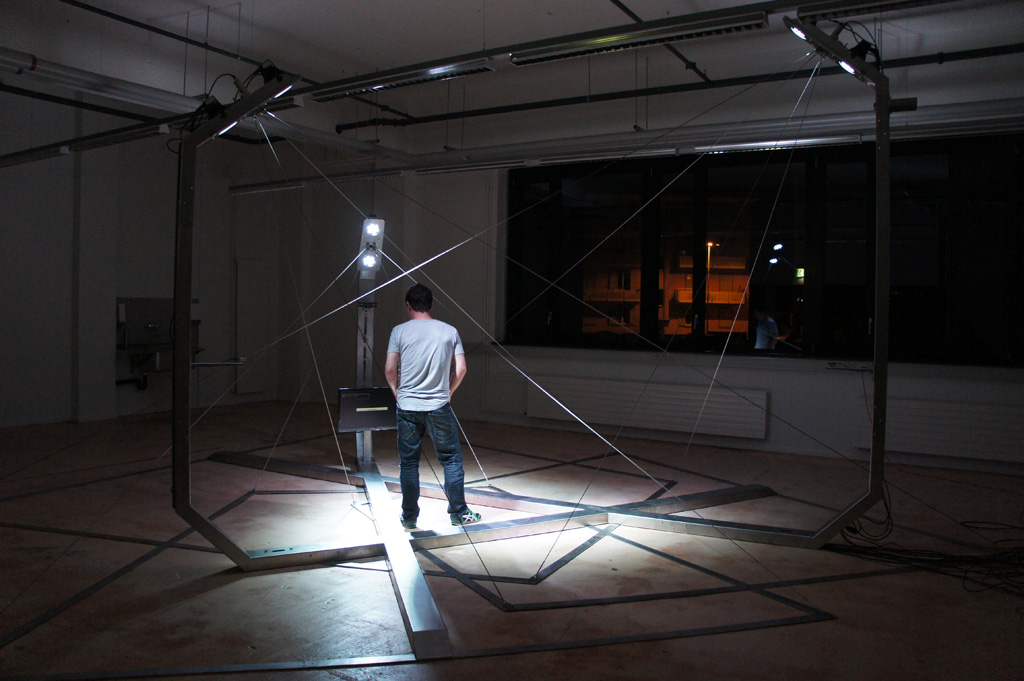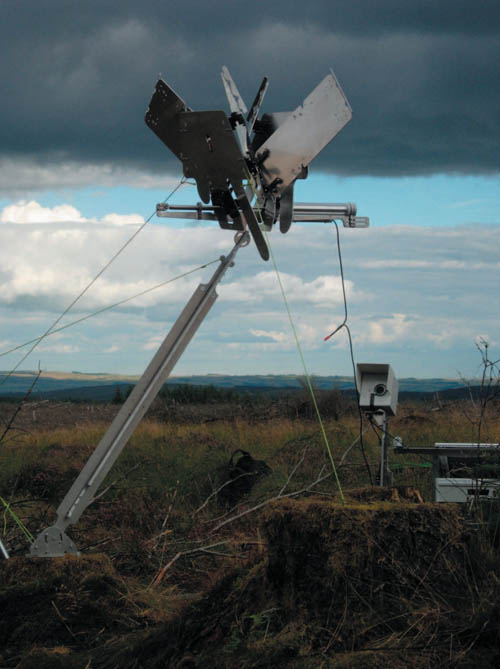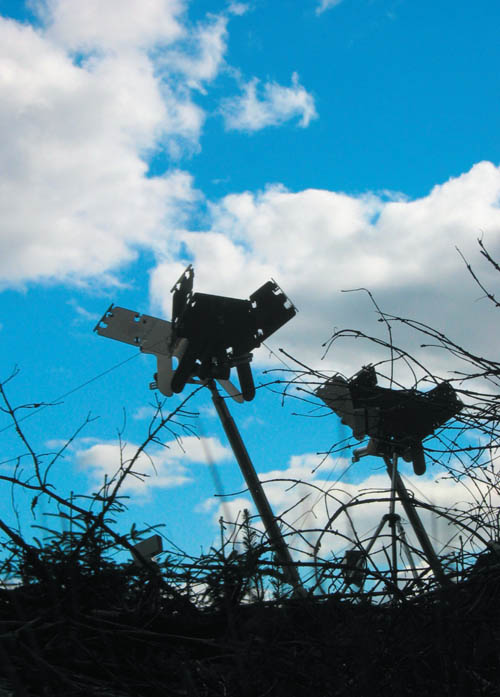Sticky Postings
All 242 fabric | rblg updated tags | #fabric|ch #wandering #reading
By fabric | ch
-----
As we continue to lack a decent search engine on this blog and as we don't use a "tag cloud" ... This post could help navigate through the updated content on | rblg (as of 09.2023), via all its tags!
FIND BELOW ALL THE TAGS THAT CAN BE USED TO NAVIGATE IN THE CONTENTS OF | RBLG BLOG:
(to be seen just below if you're navigating on the blog's html pages or here for rss readers)
--
Note that we had to hit the "pause" button on our reblogging activities a while ago (mainly because we ran out of time, but also because we received complaints from a major image stock company about some images that were displayed on | rblg, an activity that we felt was still "fair use" - we've never made any money or advertised on this site).
Nevertheless, we continue to publish from time to time information on the activities of fabric | ch, or content directly related to its work (documentation).
Friday, April 25. 2014
ECAL students create bizarre smart home objects in Milan | #smart?
Before you'll start reading, let me add a missing information: the projects were developed during a full semester by 2nd year bachelor students at the ECAL, under the direction of Profs. Chris Kabel (product design) and Alain Bellet (interaction design).
Via It's Nice That
-----
By Rob Alderson

Léa Pereyre, Claire Pondard, Tom Zambaz: Mr Time (Image By ECAL/Axel Crettenand & Sylvain Aebischer)
It’s laudable that designers are working on worthy projects that will have a practical impact on building a better future, but we’re big believers that creatives should be engaged in making tomorrow a bit more fun too. Luckily for us, there are institutions like the Ecole cantonale d’art de Lausanne (ECAL).
At this year’s Milan Salone, ECAL’s Industrial Design and Media & Interaction Design students unveiled a series of weird and wonderful objects that presented “a playful interpretation take on the concept of the smart home.” These included a clock that mimics the gestures of those looking at it, cacti that respond musically to being caressed, a pair of chairs one of which reacts to the movements of the sitter in the other, a tea spoon that won’t be separated from its mug and a fan that is powered by the amplified breath of the homeowner.
It’s fair to say that some of these creations are completely impractical, but they all raise questions about our future interaction with household objects and they do so in the quirkiest way possible.







Related Links:
Wednesday, April 04. 2012
Paranoid Shelter - (Globale Surveillance)
By fabric | ch
-----



Paranoid Shelter, beta testing, residency at the EPFL-ECAL Lab (late summer and winter 2011)
PARANOID SHELTER
Paranoid Shelter building blocks are (hardware):
- 3 network (surveillance) cameras, w. night shot functionalities
- 1 network (surveillance) PTZ (Pan Tilt Zoom) camera
- 3 embeded microphones
- 2 libellium wireless network sensors boards
- 3 temperature sensors
- 2 light sensors
- 1 humidity sensor
- 1 pressure sensor
- 1 CO2 level sensor
- 1 O2 level sensor
- 1 pollution sensor
- 1 dust sensor
- 1 dedicated wifi access point ("paranoid hotspot")
- 6 dmx controllable led lights
- 1 lcd led acreen (1920x1080), 2nd optional.
- (optional) 1 beamer 1280x800, 4000lm.
- 1 air conditioned servers' cabinet
- servers, lanboxes
- a set of inox cables
- an overall inox frame
- some books
- some blankets
Paranoid Shelter other building blocks are (custom softwares, codes & data):
- quantity of mouvement & camera tracking
- areas' occupation, heat zones
- moving objects' location
- presence/absence counting / per overall object and surrounding / per sub zones
- normal/abnormal behaviours
- sound patterns recognition, "gunshot tracking"
- noise level
- sound location
- atmosphere monitoring
- normal/abnormal atmosphere
- wifi monitoring ("snooping")
- "intelligent" behaviours, set of rules, scripts and codes
- spatial uses' data





Pictures: Patrick Keller, Nicolas Besson, Alban Van Wassenhove
On stage with Laure Wolf + Gurshad Shaheman (actors). Used as a scenographic space/device, in the context of Eric Sadin's theatrical, Globale Surveillance. CDN (Centre Dramatique National) / ESAM of Caen in France. March 2012.
The theatrical deals with societal, spatial and theoretical questions within a "global surveillance" context (networks, communications, marketing, health, economy, (state) security).
-
Team:
Project: Patrick Keller, Christian Babski, Christophe Guignard, Stéphane Carion, Nicolas Besson, Leticia Carmo
Software development: fabric | ch, Computed·By
Digital fabrication, metal: Metoforme SA
Related Links:
Friday, December 03. 2010
Probe Field
Via BLDGBLOG
-----
by noreply@blogger.com (Geoff Manaugh)
 [Image: From "Kielder Probes" by Bob Sheil].
[Image: From "Kielder Probes" by Bob Sheil].Beginning in 2003, architect Bob Sheil began experimenting with a group of "micro-environmental surveying probes" that he was later to install in Kielder Park, Northumbria, UK.
 [Image: From "Kielder Probes" by Bob Sheil].
[Image: From "Kielder Probes" by Bob Sheil]. The probes were "designed to act as dual monitors and responsive artefacts." What does that mean? Sheil explains:
The probes were designed to measure difference over time rather than the static characteristics of any given instance. Powered by solar energy, the probes gathered and recorded ‘micro environmental data’ over time. The probes were simultaneously and physically responsive to these changes, opening out when warm and sunny, closing down when cold and dark. Thus not only did the probes record environmental change, but they demonstrated how these changes might induce a responsive behaviour specific to a single location.
After the probes were installed, they were filmed by "an array of high-resolution digital cameras programmed to record at regular intervals."


 [Images: From "Kielder Probes" by Bob Sheil].
[Images: From "Kielder Probes" by Bob Sheil].
The resulting data—which took note of the climatic and solar situations in which the objects began to change—offers insights, Sheil suggests, into how "passively activated responsive architecture" might operate in other sites, under other environmental conditions.
 [Images: From "Kielder Probes" by Bob Sheil].
[Images: From "Kielder Probes" by Bob Sheil].
As DIY landscape-registration devices constructed from what appear to be off-the-shelf aluminum plates, they also cut an interesting formal profile above the horizon line, like rare birds or machine-flowers perched amidst the tree stumps.
 [Image: From "Kielder Probes" by Bob Sheil].
[Image: From "Kielder Probes" by Bob Sheil].
fabric | rblg
This blog is the survey website of fabric | ch - studio for architecture, interaction and research.
We curate and reblog articles, researches, writings, exhibitions and projects that we notice and find interesting during our everyday practice and readings.
Most articles concern the intertwined fields of architecture, territory, art, interaction design, thinking and science. From time to time, we also publish documentation about our own work and research, immersed among these related resources and inspirations.
This website is used by fabric | ch as archive, references and resources. It is shared with all those interested in the same topics as we are, in the hope that they will also find valuable references and content in it.
Quicksearch
Categories
Calendar
|
|
July '25 | |||||
| Mon | Tue | Wed | Thu | Fri | Sat | Sun |
| 1 | 2 | 3 | 4 | 5 | 6 | |
| 7 | 8 | 9 | 10 | 11 | 12 | 13 |
| 14 | 15 | 16 | 17 | 18 | 19 | 20 |
| 21 | 22 | 23 | 24 | 25 | 26 | 27 |
| 28 | 29 | 30 | 31 | |||
